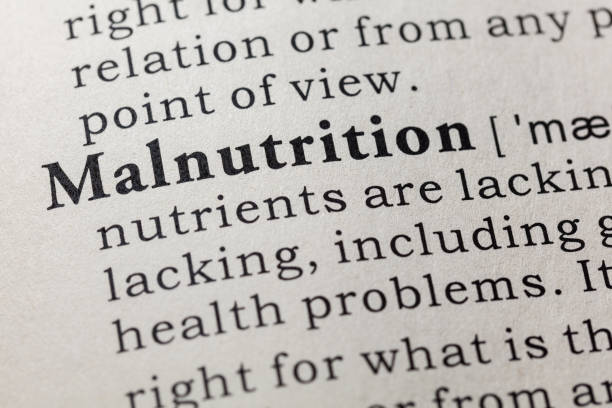Malnutrition is a multifaceted problem affecting millions worldwide. In this comprehensive guide, we delve deep into the various aspects of malnutrition, from its causes and symptoms to its prevention and treatment. By exploring the following headings and subheadings, you will gain valuable insights into combating malnutrition and promoting overall well-being.
Introduction
Malnutrition poses a significant global health challenge, with profound implications for individuals and communities. Understanding its complexities is crucial for devising effective strategies to address this issue.

Understanding Malnutrition
Defining Malnutrition
Malnutrition encompasses a range of conditions characterized by inadequate nutrition intake or poor absorption of nutrients, leading to adverse health outcomes.
Types of Malnutrition
Explore the different forms of malnutrition, including undernutrition, overnutrition, and micronutrient deficiencies, to grasp the breadth of this issue.
Causes of Malnutrition
Insufficient Food Intake
Discover how factors such as poverty, food insecurity, and limited access to nutritious foods contribute to inadequate food intake and malnutrition.
Poor Diet Quality
Learn about the impact of dietary choices, including excessive consumption of processed foods high in sugar, salt, and unhealthy fats, on nutritional status.

Digestive Disorders
Explore how conditions like celiac disease, inflammatory bowel disease, and gastrointestinal surgeries can impair nutrient absorption, leading to malnutrition.
Health Consequences of Malnutrition
Physical Effects
Understand the detrimental effects of malnutrition on physical health, including stunted growth, weakened immune function, and increased susceptibility to infections.
Cognitive Impairment
Explore the link between malnutrition and cognitive deficits, such as impaired memory, attention, and learning abilities, particularly in children.
Long-Term Complications
Discover the potential long-term consequences of untreated malnutrition, including chronic diseases like diabetes, cardiovascular disorders, and osteoporosis.
Identifying Malnutrition
Signs and Symptoms
Learn to recognize the subtle signs of malnutrition, such as unintended weight loss, fatigue, muscle weakness, and poor wound healing, to facilitate early intervention.

Screening Tools
Explore validated screening tools like the Subjective Global Assessment (SGA) and the Malnutrition Universal Screening Tool (MUST) for identifying individuals at risk of malnutrition.
Preventing Malnutrition
Promoting Nutritious Eating Habits
Discover practical strategies for promoting healthy eating habits, including consuming a balanced diet rich in fruits, vegetables, whole grains, and lean proteins.
Food Security Initiatives
Explore community-based interventions aimed at improving food security, such as food banks, subsidized meal programs, and community gardens.
Nutritional Education
Highlight the importance of nutritional education and counseling in empowering individuals to make informed food choices and prevent malnutrition.
Treating Malnutrition
Medical Management
Explore the role of medical interventions, such as dietary supplementation, enteral and parenteral nutrition, and pharmacotherapy, in treating malnutrition.

Multidisciplinary Approach
Highlight the significance of a multidisciplinary healthcare team, including physicians, dietitians, nurses, and social workers, in addressing the complex needs of malnourished individuals.
Rehabilitation and Follow-Up Care
Discuss the importance of ongoing monitoring, nutritional support, and rehabilitation services to ensure optimal recovery and prevent relapse.
What are the main causes of malnutrition?
Malnutrition can result from various factors, including inadequate food intake, poor diet quality, and underlying health conditions.
How does malnutrition affect children’s development?
Malnutrition in childhood can lead to stunted growth, developmental delays, and cognitive impairments, impacting a child’s overall health and well-being.
Is malnutrition only a problem in developing countries?
While malnutrition is more prevalent in low-income countries, it also affects vulnerable populations in developed nations due to poverty, food insecurity, and other social determinants of health.
Can malnutrition be reversed?
With timely intervention and appropriate treatment, malnutrition can often be reversed, leading to improved health outcomes and quality of life.
What role does socioeconomic status play in malnutrition?
Socioeconomic factors, such as income level, education, and access to healthcare, can significantly influence nutritional status and contribute to disparities in malnutrition rates.
Are there long-term consequences of malnutrition?
Untreated malnutrition can have lasting effects on physical and cognitive health, increasing the risk of chronic diseases and compromising overall well-being.

Conclusion
Malnutrition is a complex and pervasive issue that requires a multifaceted approach for effective prevention and management. By addressing its root causes, promoting nutritious eating habits, and ensuring access to healthcare and social support, we can work towards a healthier future for all.



